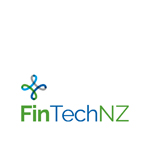Article by Shaun Crawford on LinkedIn
Blockchain and distributed ledger technologies have the potential to change the traditional insurance model for the better and make the entire industry more efficient, innovative and profitable. Following a recent 20-week proof-of-concept project, EY – along with Guardtime and other collaborators – is building a working blockchain platform that will make that potential a reality by connecting every major stakeholder in the insurance value chain. Initially focused on marine insurance, the platform will be relevant and useful for all insurance markets. You can learn more about the proof of concept and platform on our landing page.
The combination of distributed ledger technologies and blockchain is a practical way to provide organizations with real-time client, risk, exposure and claims data and enable the smart contract model needed to drive automation. It also confirms how blockchain and distributed ledger technologies can create new ways to improve the service proposition for multinational clients and address deep-rooted cost, efficiency, accuracy and compliance issues. Specifically, the blockchain-enabled platform connects shippers, brokers, insurers and third parties to distributed common ledgers that securely capture real-time data about identities, risks and exposures and integrates this data with smart insurance contracts.
As attractive as the benefits are, there are a number of considerations and complexities that stakeholders must work through. Based on learnings from our proof-of-concept project and the development of our platform, there are six critical things to keep in mind in deploying blockchain in the insurance industry.
Blockchain can benefit everyone, but the ecosystem must actively commit. Blockchain can help create transparency of data between multiple parties. This transparency combined with the use of SMART contracts can eliminate duplication and encourage automation. These gains depend upon the ability of external systems to feed accurate and consistent data and a supporting regulatory system. Industry participants need to work together on data and governance standards and fundamentally re-think their organizations to realize the full benefits.
Distributed ledgers and blockchain will drive efficiencies and secure the audit trail, but SMART contracts can disrupt. Such contracts use computer code to validate and execute commercial data and actions agreed by contracting parties. They have the potential to drive operational efficiencies and service quality, but need accurate external data feeds and protocols and consistent legal and data syntax. SMART contracts and radical changes to the insurance value chain will result in longer-term benefits, but the short-term benefits will be driven by data sharing and transparency..
Blockchain can foster innovation, but it will take time and investment. Blockchain improves the accuracy and transparency of data and provides a platform for businesses to develop or fundamentally change the model. It can create growth opportunities in new and existing markets and change the way risk is bought and sold. But new models will require sustained investment, genuine commitment from all parties and a fundamental change to existing business processes.
Blockchain can help transform insurance, but it must have the right model. It needs to be scalable and flexible, without any compromise on performance or security. Control over data access is critical. Blockchain must also work alongside the other IT platforms and technologies the business is already using so that operational processes and systems can be integrated. The industry will have to develop data standards to facilitate such integration.
Blockchain mitigates some risks, but opens the door to new challenges. It lessens the risk of fraud, compliance failure, errors and omissions and poor customer service. But it can complicate risks in a number of areas. To manage these risks, it’s important to define strict controls and governance measures and to consider legal options and prepare for potential jurisdictional challenges.
Blockchain can help the industry respond to the regulatory agenda, but regulators must be involved from the start. Its ability to create a single version of the truth could also become a source of systemic risk if truth becomes falsehood. Any technology that involves extensive data sharing and cross-jurisdiction transactions will raise issues around privacy, security and governance. There will be new practices and processes that regulators will want to look at closely
You can learn more about these critical concerns, as well as our experience with the proof-of-concept, by reading our initial report – Better-working insurance: moving blockchain from concept to reality.
We believe this proof of concept is reason for excitement about the future of the industry. Yes, there are many technical, legal, regulatory and cultural issues to address, but the potential transformative value has been validated and we are moving forward to make it a reality.






